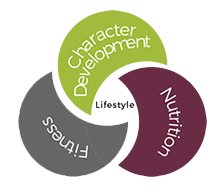PREVENTION FOR LIFE : SPRING IN YOUR WALK
Spring in Your Walk – Press-Enterprise
April 4, 2006
By MIKE SCHWARTZ, THE PRESS-ENTERPRISE
Spring is a great time for older adults to shake off those winter cobwebs and get outdoors for brisk walks.
“Walking is the most popular physical activity among senior citizens,” said athletic trainer Jim Clover, coordinator of the S.P.O.R.T. Clinic in Riverside and author of Sport Medicine Essentials.
“It’s cheap, accessible and good for walking the dog,” Clover said. Daily “constitutionals” can build cardiovascular endurance, strengthen muscles, help keep excess pounds off and lower risks of stroke, heart attack, osteoporosis and diabetes.
“There’s no downside as long as you don’t overdo it,” he said.
What’s more, mild to moderate exercise also improves balance, so you’re less likely to fall, and unleashes natural brain hormones called endorphins that can lift your spirits.
The following tips from Clover and Karla Adams, a professional fitness trainer in Riverside, will help ease you into a regular, safe and enjoyable walking regimen:
Check with your doctor. No matter how spry you feel, first get a physical or talk to your health provider about any pain or difficulty walking.
Don’t let problems hold you back. Even if you have chronic pain or require a walker or a cane, don’t use that as an excuse not to walk. Assistive devices can help your balance, lift the load off ailing, painful joints and make exercise possible.
Find a walking buddy. Chances are you’ll stick with exercise if you have someone to walk with. Consider joining a walking/running club such as the Loma Linda Lopers.
Warm up and cool down. Stretching helps loosen tight muscles and improves circulation. Stretching afterward will lower build-up of lactic acid, chemical byproducts that cause muscle fatigue and aching.
Ease into exercise. If you haven’t been active for a long time, walk just a few blocks at first, then build up slowly to 20 or 30 minutes daily. The main thing is to get started. Once you’ve developed stamina, you can go for longer distances.
Don’t walk seven days a week. Your body needs at least two days of rest to repair itself. Do something different like ride a bicycle. And don’t ignore pain.
Set a comfortable pace. Walk briskly, but not so fast that you exhaust yourself. A “conversational” pace will make your heart beat faster yet allow you to chat.
Wear the right shoes. As shoes are your only walking expense, don’t skimp. Comfortable sneakers work well for most people, but others may require lace up hiking boots that provide solid ankle support. Wear socks to wick sweat away from your skin.
Never heard of that word
People with foot ailments or low bone density may do better walking on softer ground.
Drink plenty of fluids. Don’t get dehydrated . To avoid heat exhaustion, heat cramps and heat stroke, walk in shady areas and carry a water bottle.



